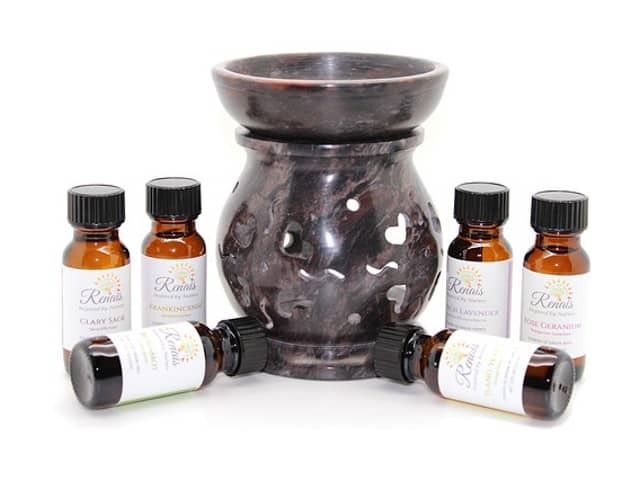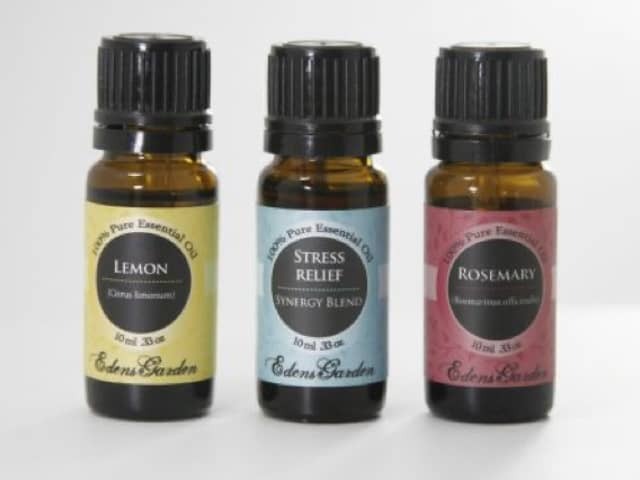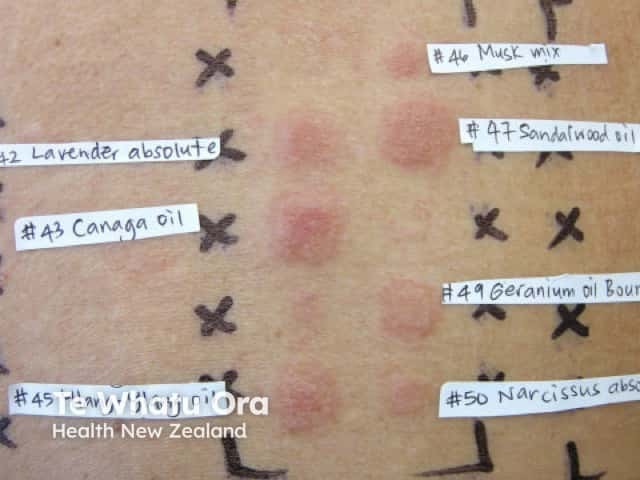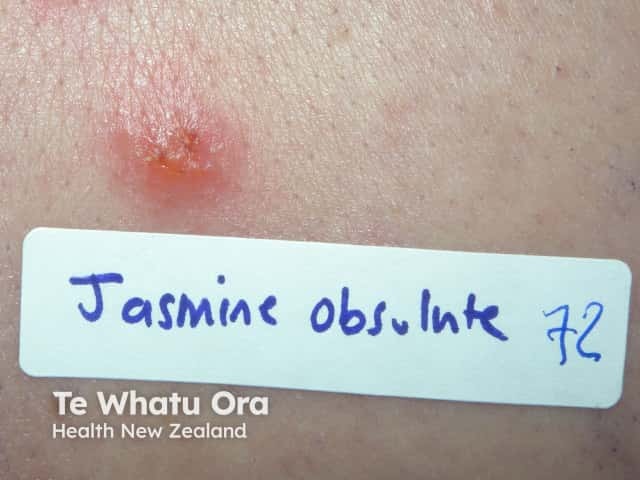Main menu
Common skin conditions

NEWS
Join DermNet PRO
Read more
Quick links
Allergic contact dermatitis to essential oils — extra information
Allergic contact dermatitis to essential oils
Authors: Dr Fathima Ferial Ismail, Dermatology Research Fellow, Sinclair Dermatology, East Melbourne, VIC, Australia; A/Prof. Rosemary L Nixon, Dermatologist and Occupational Physician, Occupational Dermatology Research and Education Centre, Skin and Cancer Foundation Inc., Melbourne, VIC, Australia. Technical editor: Mary Elaine Luther, medical student, Ross University School of Medicine. DermNet Editor in Chief: Adjunct A/Prof. Amanda Oakley, Dermatologist, Hamilton, New Zealand. Copy edited by Gus Mitchell. January 2020.
Introduction - essential oils Introduction Demographics Causes Clinical features Complications Diagnosis Differential diagnoses Treatment Outcome
What are essential oils?
Essential oils are volatile aromatic substances obtained from plant material through various methods including distillation and extraction. Essential oils have been widely used for centuries in aromatherapy, balneotherapy, and perfumery (see perfumes and fragrances). During aromatherapy, essential oils are often applied directly to the skin or delivered by inhalational methods. Essential oils are also increasingly being used in household products and in aerosol diffusers [1,2].
Commonly used essential oils include [1,3]:
- Tea tree oil (Melaleuca alternifolia oil)
- Ylang-ylang oil (I and II) (Cananga odorata oil)
- Lemongrass oil (Cymbopogon spp. oil)
- Sandalwood oil (Santalum album wood oil)
- Clove oil (Eugenia caryophyllus oil)
- Jasmine absolute oil (Jasminum officinale oil)
- Sweet bay (Laureal) oil (Laurel nobilis oil)
- Cedarwood oil (Juniperus virginiana wood oil)
- Patchouli oil (Pogostemon cablin oil)
- Neroli oil (Citrus aurantium flower oil)
- Peppermint oil (Mentha piperita oil)
- Narcissus absolute oil (Narcissus poeticus flower extract)
- Lemon oil (Citrus medica limonum oil)
- Eucalyptus oil (Eucalyptus globulus oil)
- Orange oil (Citrus aurantium dulcis oil)

Essential oils

Three essential oils

Pure natural essential oils
What is allergic contact dermatitis to essential oils?
Allergic contact dermatitis to essential oils is a form of dermatitis (eczema) that develops as a result of a delayed hypersensitivity reaction when essential oils contact the skin [4].
A number of essential oils are known to be allergenic. Essential oils that commonly cause allergic contact dermatitis include [1–3]:
- Tea tree oil
- Ylang-ylang oil (I and II)
- Lemongrass oil
- Sandalwood oil
- Clove oil
- Jasmine absolute oil
- Narcissus absolute oil.
Who gets allergic contact dermatitis to essential oils?
Allergic contact dermatitis to essential oils occurs more commonly in people with occupational exposure to essential oils [1,5,6]:
- Aromatherapists
- Masseurs
- Physiotherapists
- Hairdressers
- Beauticians
- Manufacturers of cosmetics.
Other groups who risk allergic contact dermatitis to essential oils include [1,6]:
- People with atopic dermatitis
- Older patients
- Women.
As a result of increasing use of essential oils in the home, there have been cases of airborne contact dermatitis caused by fragrance diffusers [7,8].
Essential oils are used in many countries such as Iran, India, China, and Thailand as a traditional topical therapy for stomach-ache and flatulence in infants. Localised eczematous reactions have been observed in the abdominal region of infants exposed to this therapy [9].
What causes allergic contact dermatitis to essential oils?
Allergic contact dermatitis is a delayed (type 4) hypersensitivity reaction that generally occurs 24–72 hours following exposure to an allergen. The mechanism involves recognition of the allergen by pre-sensitised T-lymphocytes, which release inflammatory cytokines that activate the skin immune system and cause dermatitis [10].
Each essential oil can have over 100 constituents [11]. Often people with allergic contact dermatitis to essential oils react to many different oils, not just one, presumably because of shared constituents [5].
What are the clinical features of allergic contact dermatitis to essential oils?
The most common symptoms of allergic contact dermatitis are skin itching, redness, and scaling [4]. These symptoms usually occur at the site of contact with the essential oil but can extend outside of this area.
In aromatherapists, the hands and forearms are most commonly affected with possible involvement of the face, neck, and legs [5,11,12]. Spread to other areas has also been reported [13]. Symptoms usually improve with time spent away from work.
People who have been exposed to airborne essential oils can also have widespread involvement [7,8].
What are the complications of allergic contact dermatitis to essential oils?
People who work within the aromatherapy and massage industry can experience serious consequences of sensitisation to essential oils, which can result in them being unable to work [5]. There can also be an impact on social activities and even permanent disability [6].
How is allergic contact dermatitis to essential oils diagnosed?
Clinical history and examination
A detailed history of exposure, together with the clinical features, morphology, and distribution of the lesions, are important in making the diagnosis of allergic contact dermatitis to essential oils.
In cases of occupational exposure to essential oils, symptoms often improve during holidays or weekends [14].
Patch testing
Patch testing is used to determine the cause of allergic contact dermatitis. Patches containing small amounts of potential allergens are applied to the back and then removed after 48 hours to observe for an allergic reaction, which manifests as localised eczema. The test site is observed again after an additional 48–96 hours [4].
Patients who are allergic to essential oils commonly have multiple sensitisations [5]. Most patients with allergic contact dermatitis to essential oils also have positive reactions to fragrance mix I in the baseline series; however, extended patch testing is necessary, because not all affected patients are positive to fragrance mix I [13]. Patch testing to the patient's own products is useful as the allergen may be an oxidised component [3].

Positive patch tests to essential oils

Positive patch tests to jasmine absolute oil

Positive patch tests to lemon oil
Other methods
Histology can sometimes be helpful in distinguishing allergic contact dermatitis from other forms of dermatitis [14].
Gas chromatography and mass spectrometry have been used experimentally to analyse essential oils in order to identify common allergens within them [15].
What is the differential diagnosis for allergic contact dermatitis to essential oils?
Conditions that may co-exist or be confused with allergic contact dermatitis to essential oils are:
Irritant contact dermatitis
Irritant contact dermatitis to essential oils in high concentrations can coexist with allergic contact dermatitis. Irritant contact dermatitis is confined to the area of contact with the offending substance, whereas allergic contact dermatitis can extend beyond the area of direct contact [14].
Contact urticaria
Contact urticaria presents as a weal-and-flare reaction within minutes of exposure to a substance and resolves within minutes to hours [6].
Photocontact dermatitis
Photocontact dermatitis occurs when certain substances — including perfumes and fragrances — are applied to the skin and subsequently exposed to sunlight [6].
What is the treatment for allergic contact dermatitis to essential oils?
Prevention
Prevention of allergic contact dermatitis to essential oils relies on allergen avoidance [14]. In particular, people should be advised not to apply neat, undiluted oils directly to the skin, as this can lead to sensitisation [3].
- Gloves for hand protection should be considered; however, they might not be appropriate in some occupations, such as masseurs [14].
- Education is an essential part of prevention – counsel patients on allergen avoidance and barrier protection methods [14].
Treatment
Topical corticosteroids are the main treatment for active dermatitis.
- Moisturisers and barrier creams may be used to soothe, protect, reduce dryness, and minimise the amount of topical steroid used.
- Systemic corticosteroids (eg, prednisone) and immune modulating agents may be used in widespread dermatitis or refractory cases.
- Oral antibiotics may be required for secondary bacterial infection.
- Oral antihistamines may be used for their sedative effect, but have no effect on the dermatitis [14].
What is the likely outcome for allergic contact dermatitis to essential oils?
Avoidance of the allergenic essential oils usually results in resolution of skin symptoms [13]. In some cases, the symptoms persist and become chronic, especially if there is ongoing inadvertent low-dose exposure in daily life.
References
- Uter W, Schmidt E, Geier J, Lessmann H, Schnuch A, Frosch P. Contact allergy to essential oils: current patch test results (2000-2008) from the Information Network of Departments of Dermatology (IVDK). Contact Dermatitis. 2010;63(5):277–83. doi:10.1111/j.1600-0536.2010.01768.x. PubMed
- Frosch PJ, Johansen JD, Menné T, et al. Further important sensitizers in patients sensitive to fragrances. Contact Dermatitis. 2002;47(5):279–87. doi:10.1034/j.1600-0536.2002.470204.x. PubMed
- Rutherford T, Nixon R, Tam M, Tate B. Allergy to tea tree oil: retrospective review of 41 cases with positive patch tests over 4.5 years. Australas J Dermatol. 2007;48(2):83–7. doi:10.1111/j.1440-0960.2007.00341.x. PubMed
- Sarkic A, Stappen I. Essential oils and their single compounds in cosmetics – a critical review. Cosmetics. 2018;5(1):11. doi.org/10.3390/cosmetics5010011 Journal
- Bleasel N, Tate B, Rademaker M. Allergic contact dermatitis following exposure to essential oils. Australas J Dermatol. 2002;43(3):211–13. doi:10.1046/j.1440-0960.2002.00598.x. PubMed
- Crawford GH, Katz KA, Ellis E, James WD. Use of aromatherapy products and increased risk of hand dermatitis in massage therapists. Arch Dermatol. 2004;140(8):991–6. doi:10.1001/archderm.140.8.991. PubMed
- Schaller M, Korting HC. Allergic airborne contact dermatitis from essential oils used in aromatherapy. Clin Exp Dermatol. 1995;20(2):143–5. doi:10.1111/j.1365-2230.1995.tb02719.x. PubMed
- Shah KM, Goldman SE, Agim NG. Airborne contact dermatitis caused by essential oils in a child. Dermatitis. 2019;30(1):79–80. doi:10.1097/DER.0000000000000430. PubMed
- Tempark T, Chatproedprai S, Wananukul S. Localized contact dermatitis from Ferula assa-foetida oleo-gum-resin essential oil, a traditional topical preparation for stomach ache and flatulence. Indian J Dermatol Venereol Leprol. 2016;82(4):467. doi:10.4103/0378-6323.182969. PubMed
- Verallo-Rowell VM, Katalbas SS, Pangasinan JP. Natural (mineral, vegetable, coconut, essential) oils and contact dermatitis. Curr Allergy Asthma Rep. 2016;16(7):51. doi:10.1007/s11882-016-0630-9. PubMed
- Boonchai W, Iamtharachai P, Sunthonpalin P. Occupational allergic contact dermatitis from essential oils in aromatherapists. Contact Dermatitis. 2007;56(3):181–2. doi:10.1111/j.1600-0536.2007.01024.x. PubMed
- Selvaag E, Holm JO, Thune P. Allergic contact dermatitis in an aroma therapist with multiple sensitizations to essential oils. Contact Dermatitis. 1995;33(5):354–5. doi:10.1111/j.1600-0536.1995.tb02058.x. PubMed
- Trattner A, David M, Lazarov A. Occupational contact dermatitis due to essential oils. Contact Dermatitis. 2008;58(5):282–4. doi:10.1111/j.1600-0536.2007.01275.x. PubMed
- Weintraub GS, Lai IN, Kim CN. Review of allergic contact dermatitis: scratching the surface. World J Dermatol. 2015; 4: 95–102. doi: 10.5314/wjd.v4.i2.95. Journal
- Dharmagunawardena B, Takwale A, Sanders KJ, Cannan S, Rodger A, Ilchyshyn A. Gas chromatography: an investigative tool in multiple allergies to essential oils. Contact Dermatitis. 2002;47(5):288–92. doi:10.1034/j.1600-0536.2002.470506.x. PubMed
On DermNet
- Allergic contact dermatitis
- Contact allergens
- Aeroallergens and the skin
- Irritant contact dermatitis
- Contact dermatitis
- Photocontact dermatitis
- Dermatitis
- Fragrances and perfumes
- Fragrance mix allergy
- Fragrance allergy
- Occupational skin disease
- Patch tests
- Hand care for healthcare workers
- Cosmetics allergy
Other websites
- Occupational Dermatology Research and Education Centre, Melbourne, Australia
- Contact Dermatitis — British Association of Dermatologists
- Contact Allergen Database
